#george + daisy lavender marriage when?
Explore tagged Tumblr posts
Text
🎆🎊🍾 Happy New Year From the Whole Nesbitt Fam (with Goths, Gordons, Bells, and a Landgraab, too!) 🎇🎉🗓️


I was going to let this post tomorrow, but I kept thinking that's just too late. So this morning was for plot and this afternoon is for pretending the Nesbitts got together for a family portrait on their lawn at midnight on New Year's Eve.
That's the whole main legacy family in one place to ring in the coming year!
Also, it took three decades but I finally picked a couple name for Daisy and Neal. Happy New Year to Neasy and fam, but mostly to you reading this right now! 🎊🍾
I loaded up the game at night and didn't want to wait for morning. Then I struggled for many hours getting this to look even half decent, trying to keep them posed and waiting for them not to all be breathing steam. Finally I got 16 of 17 sims to pose and Heather to stand somewhat as if she's part of the whole thing, so I'm very happy to call this a day night in celebration of founders Daisy and Neal and all they've built together after 32 years of marriage.

clockwise from top left: Conrad Gordon, Lavender Gordon, Tetra Bell, Heather Nesbitt, Karl (Nesbitt) Goth, Mortimer Goth, Samuel "Sammy" Nesbitt, Cassandra (Goth) Nesbitt, Hazel Nesbitt, River Nesbitt, Michael Nesbitt, Neal Nesbitt, Daisy Nesbitt holding granddaughter Betta Bell, Holly (Nesbitt) Bell, Kris Bell, and Ash Landgraab
This is by far the most sims I've posed yet so I'm ringing in the New Year with a new challenge for myself. Despite the poor choice of setting and lighting I'm very happy with it - especially since it took three poses in one to get done.

I mainly used @goldoradove's excellent Happy Family pose for 19 sims. But Tetra could not be found among the feet beneath the sofa so I switched tactics and posed her and Heather with BommieSims' Children's Day posepack (only Tetra stayed put), which I can't actually find to link anymore. If anyone knows where to find it, let me know! And Ash was posed with @somneasims' Our Legacy posepack, which I really like a lot - I also used it for Bella and her fam's cozy Winterfest portrait. Even Heather, who isn't looking at the camera, at least looks engaged in the moment enough (watching Tetra balance on her dad's arm when she should be holding her?!) for me to say I'm happy.
Daisy, Neal, his brother Karl, all four kids and six grandkids, plus son-in-law Kris Bell, daughter-in-law Cassandra, future son-in-law Conrad Gordon, and Karl's husband, Mortimer Goth (he's also Cass' dad and Michael and Sammy's granddad; since they missed out on Bella's Winterfest portrait I definitely had to include them now.)

Thank you for a great first half-year on Simblr. I love this place and all your creativity so much. Here's to 2025 and whatever madness this game we all love throws our way!
Friday, we're leaving this ice box weather and sending Conrad to Sulani in search of George Brindleton, who's gone silent, and hopefully (finally) he'll find Rafa, too!
Gen 2 Start | Gen 2.1 Summary
Gen 1 Start | Gen 1 Summary
And for funsies, the full family group sheet (not including Karl and Morty): for reference, it's basically the end of 2057/start of 2058 in game, Lavender and Betta are two and a half, Sammy is two, Tetra's almost five, Michael is six, and Ash is almost eight already!
Sims In Bloom: Generations 1-3 Family Tree
Daisy Lea (Darden) Nesbitt (2003-) m. Neal Sims Nesbitt (2002-) 1. Heather Lea "Buttercup" Nesbitt (2025-) r. Malcolm Chester Landgraab (2025-) [r. 2046-49] *not pictured* 1. Ash Neal Landgraab (2050-) e. Conrad Stephen Gordon (2025-) 2. Lavender Helena Gordon (2055-) 2. Holly Darden (Nesbitt) Bell (2027-) m. Kristopher "Kris" Michael Bell (2027-) *son of Michael Bell & Cecilia Kang* [m. 2049-] 1. Tetra Daisy Bell (2053-) 2. Betta Cecilia Bell (2055-) 3. River James Nesbitt (2029-) m. Cassandra Enriqueta (Goth) Nesbitt (2028-) [m. 2050-] 1. Michael "Mike" Bachelor Nesbitt (2052-) 2. Samuel "Sammy" Crumplebottom Nesbitt (2056-) 4. Hazel Honey Nesbitt (2033-) div. Nicola Kimberly Moody-McMillan (2033-) [m. 2054-57] *to be seen on @changingplumbob's Dating Deanna starting this winter and not pictured*
#sims 4#sims 4 screenshots#sims 4 legacy#sims in bloom#ts4#ts4 legacy#ts4 screenshots#sims 4 story#legacy challenge#sims legacy#ts4 legacy challenge#gen 2#gen 1#henford on bagley
63 notes
·
View notes
Text
THE GREAT FITZGERALD

thank u @dazaistabletop for getting me so interested in Fitzgerald's character. ur my favourite Fitz kinnie ok mwah( ˘ ³˘)♥
Francis Scott Key Fitzgerald's novel— The Great Gatsby— was a love story that involved Jay Gatsby, whose mannerisms and characteristics appear to be quite similar to Fitzgerald in the Bungou Stray Dogs adaptation. I just finished reading The Great Gatsby so I thought I'd just make a comparison between the main protagonist of the novel and the main antagonist in BSD's Guild Arc.
Other than the fact that both Jay and Fitzgerald share similar character traits (ambitious, arrogant, and optimistic) the relationships Jay had with the other characters of the novel and the interactions that Fitzgerald had with the other characters of BSD are quite similar, too. I'll focus on three specific associations that both Fitzgerald and Jay experienced in a parallel manner:
Zelda Fitzgerald and Daisy Buchanan
Tom Buchanan
Louisa May Alcott and Nick Carraway
SPOILERS FOR THE GREAT GATSBY!
in case anyone hasn't read it but wants to :)
To avoid confusion, every time I mention Fitzgerald from here on out, I mean the character from BSD; I will specify my references if it comes to the author.
The Great Gatsby had its plot set around the time of the Roaring Twenties: the aftermath of World War I, the peak of socialite culture, and the growth of a prosperous economy and general wealth altogether.
The Roaring Twenties was also a time of luxurious pleasure and liquor, where people indulged themselves and got addicted to hedonism— the pursuit of gratification.
The Great Gatsby was actually written on the basis to prove how corrupt this age was, and the existence of such corruption was vaguely hinted by various factors, one of which included Jay Gatsby's actual source of income: being involved in the affairs of the black market. This proves that illegal activities were not uncommon around that time, as people did anything they could to achieve materialistic gains.
This isn't a history lesson, I promise.
Both Jay Gatsby and Fitzgerald had grown up in poverty and disliked the concept of being anything short of wealthy. They both worked extremely hard to attain financial abundance.
I presume that not everything they did was actually legal when it came to gaining money. As mentioned before, Jay was involved in criminal activities which founded the basis of his wealth, while Fitz once mentioned that in order to own a gun, he had to kill 4 people. He goes on to tell us that he ended up owning that specific gun's manufacturer eventually.
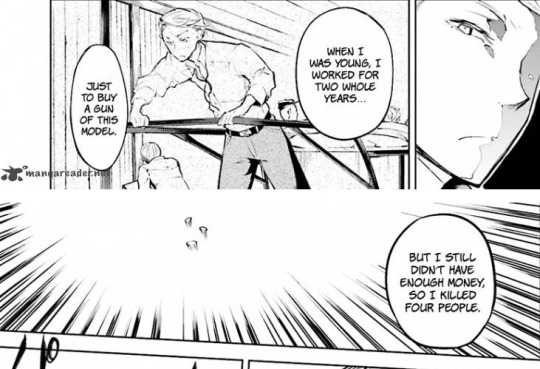
Daisy Buchanan and Zelda Fitzgerald.
The Great Gatsby is actually centered around Jay Gatsby's rather obsessive infatuation with Daisy.
Daisy was a beautiful lady with a incredibly charming nature— she didn't have much trouble with attracting many men back then before she got married to Tom Buchanan, the antagonist of the story and the rival of Jay Gatsby.
"Her voice was full of money," he said suddenly.
That was it. I'd never understood before. It was full of money— that was the inexhaustible chair that rose and fell in it, the jingle of it. the cymbals' song of it... High in a white palace the King's daughter, the golden girl...
Daisy and Jay Gatsby fell in love right before he was sent off to war and a few years before she met Tom. Before they were separated, Jay's dream of gaining wealth and status was primarily flamed by his intention of reaching Daisy's social ranking in order to be worthy of her love.
Initially, because of how passionate he was about his love for her, Jay lied to Daisy about his wealth. It was only after the War did he actually gain the riches he aimed for. By the time he did achieve his monetary goals, Daisy had married Tom already. Consequently, Jay hosted a bunch of lavish parties in order to gain her attention, prove himself and his love for her, and ultimately, win her back.
Jay perceived Daisy as a literal angel, void of any flaw whatsoever. He even tells Nick, the main character, that the fact that numerous men got romantically involved with such a lady just increased her value altogether.
But what gave it an air of breathless intensity was that Daisy lived there— it was as casual a thing to her as his tent out at camp was to him. There was a ripe mystery about it, a hint of bedrooms, of gay and radiant activities taking place through its corridors, and of romances that were not musty and laid away already in lavender but fresh and breathing and redolent of this year's shining motor cars and of dances whose flowers were scarcely withered. It excited him too that many men had already loved Daisy— it increased her value in his eyes. He felt their presence all about the house, pervading the air with the shades and echoes of still vibrant emotions.
As the story unfolded, Daisy's character was torn apart for a proper, more brutally realistic perspective of her true character, revealing a shallow, selfish lady who solely placed her interest in money and luxury, the things which she often took refuge in when things went wrong. As the plot developed itself, the actuality that Jay fell in love with the idea of Daisy, instead of Daisy herself, was much more evident. And it took quite some time for him to discover and acknowledge the truth.
Fitzgerald's love for Zelda was very apparent, too, except that it seemed more genuine and pragmatic. Not much is speculated about Fitz and Zelda's relationship in the Guild Arc, but his love for her was very deep, as everything he did was for her and their deceased daughter.
Side note: Fitzgerald (the author) based Daisy's character partially on Zelda, as both women were brought up in wealthy families and took a general liking to lifestyles revolving around money and ease.
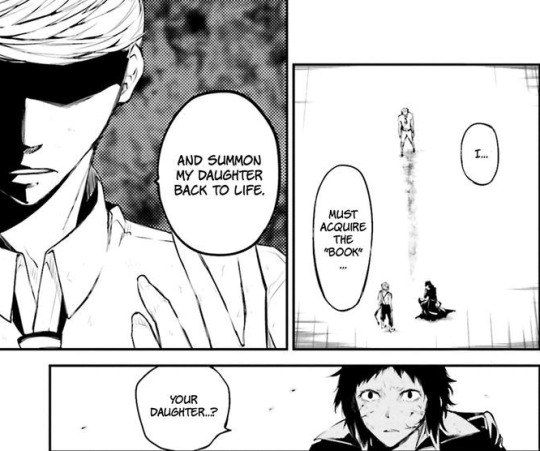

Fitzgerald was in love with Zelda, a woman plagued by a debilitating illness. In The Great Gatsby, Jay was in love with a woman who was plagued by the deceptive addiction of self-satisfaction gained by pleasure and whatnot. Zelda was impaired by an mental illness, while Daisy was intoxicated by the security of money and prestige. This is an abstract suggestion though. Personally, that's how I interpreted this correlation when it came to examining these dynamics in their respective universes.
Tom Buchanan
As mentioned before, Thomas Buchanan was Daisy's husband and Jay's rival who had similar characteristics in matters of personality. The Toms in both book and anime were arrogant and cunning, which pretty much vouches for their selfishness.
In the book, Tom is supposedly the love of Daisy's life, except that she just married him for his money instead of waiting for Gatsby. Then again, Tom was involved in a love affair outside his marriage with a lady named Myrtle Wilson. Tom cheated on Daisy by getting involved with Myrtle. On the other hand, Daisy was unfaithful to Tom by keeping her love and relationship with Jay a secret from him.
The climax of the story partly revolves around Myrtle dying in a hit-and-run car accident. The grand twist was that Daisy was the one driving the car, and the car actually belonged to Gatsby. Because the car belonged to Gatsby, George Wilson, the husband of Myrtle, was bent on revenge and tracked down the car. He ended up killing Jay Gatsby, and soon after that, he killed himself.
It was quite a scandal, but Daisy estranged herself from such a tedious matter. In fact, when Jay died, she did not even attend his funeral. Tom was under the impression that Gatsby was the one who killed his mistress, not Daisy, his wife. Either ways, Nick described them in a way that sums up what became of them after Jay's death:
They were careless people, Tom and Daisy— they smashed up things and creatures and then retreated back into their money or their vast carelessness or whatever it was that kept them together, and let other people clean up the mess they had made...
It's interesting to note that in chapter 45 of the BSD manga, Tom appears as the antagonist who was later found guilty of murdering his employee, but the blame was originally put on T.J Eckleburg, the inventor of the Eyes of God.

Side note: T.J. Eckleburg was actually an optician who appeared on a billboard advertisement in the novel. This billboard was used as a personification by Nick Carraway, which was meant to embody the representation of a displeased overseer who observed the events that unfolded before him. The Eyes of God has a similar concept: scrutinising everything with an accuracy of 97%. It's a personal speculation, but the Eyes of God was proven to be of utmost importance in the Cannibalism Arc when it came to capturing Fyodor Dostoevsky. Likewise, T.J. Eckleburg's eyes showed how corruption and misconduct never escaped his judgmental visage.
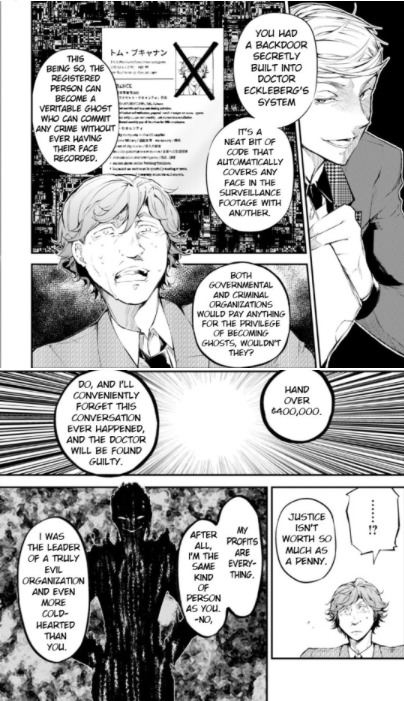
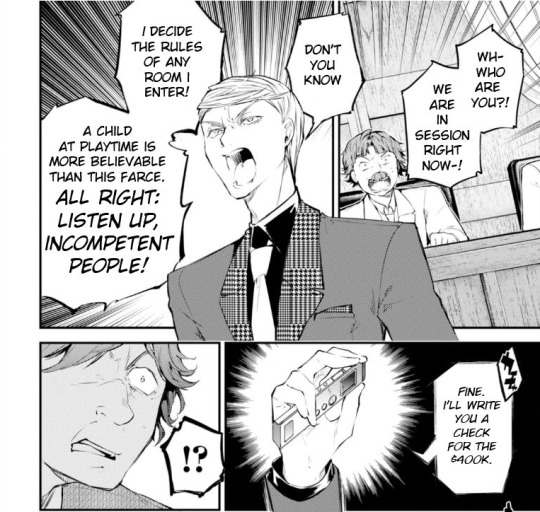
sorry about the quality of the manga panels ;-;
In the manga, Fitzgerald manages to triumph over Tom by betraying his trust altogether in order to obtain the ownership of the Eyes of God and Tom's company. This stands in contrast to what became of Jay in the novel, but the protagonist got what he wanted in this universe.
Keep in mind that Fitzgerald didn't act according to fulfil what justice required; it was purely business. Just like Jay Gatsby put on the facade of a plain, rich man who was really just bootlegging his way to opulence, Fitzgerald wasn't afraid to betray someone's trust to get what he wanted.
Nick Carraway and Louisa May Alcott
If I were to pick a character that represented Louisa May Alcott in BSD from the book, I'd pick the narrator himself: Nick Carraway. Again, this is my personal interpretation, so the association between these two characters is just my personal opinion.
Nick Carraway was known as the more reserved, cynical protagonist compared to Jay. The both of them developed a cordial friendship as the story progressed.
Nick initially took a liking to Gatsby, who was his neighbour. The enigmatic aura Gatsby emitted called for Nick's attention, and in the same way, Gatsby reciprocated his interest in Nick by making the effort to acquaint himself with him.
He had one of those rare smiles with a quality of eternal reassurance in it, that you may come across four or five times in life. It faced, or seemed to face, the whole external world for an instant and then concentrated on you with an irresistible prejudice in your favor. It understood you just as far as you wanted to be understood, believed in you as you would like to believe in yourself.
There were a few times which suggests that Nick didn't like the way Gatsby acted or spoke. Nevertheless, Nick was the only one who stuck with Gatsby until the end.
"They're a rotten crowd," I shouted across the lawn. "You're worth the whole damn bunch put together.
(This was the last thing Nick said to Jay before he died.)
At first, Nick was intrigued by Jay's mystical nature and peculiar idiosyncrasies, but found that Gatsby was a very strange, but 'morally bad' man. However, over time, Nick became one of the few who managed to recognise Gatsby's idealistic ambitions; he saw through all the fame and wealth and found a mere human being capable of being entrapped by love's snares. Basically, he understood Gatsby, despite disagreeing with his actions and even his behaviour at times.
As for Louisa, well, it is a known fact that she was loyal to Fitzgerald because of how much she respected and trusted him.
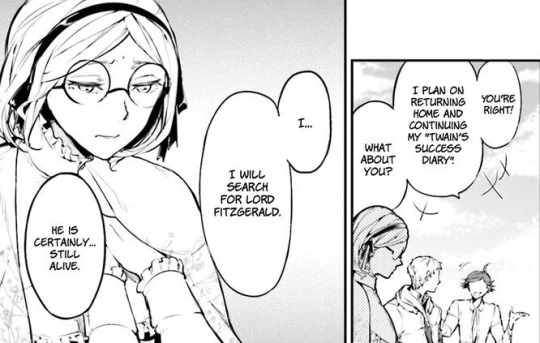

Both Nick and Louisa were intelligent, witty people with generally nice, honest, and reserved dispositions. Their self-contained demeanours make it very easy to get along with the more exurbent/dominant personas of Gatsby and Fitzgerald. So in the event where each pair was isolated from the rest of the world, they had each other to depend on.
Next morning I sent the butler to New York with a letter to Wolfsheim, which asked for information and urged him to come out on the next train. That request seemed superfluous when I wrote it. I was sure he’d start when he saw the newspapers, just as I was sure a there’d be a wire from Daisy before noon – but neither a wire nor Mr. Wolfsheim arrived; no one arrived except more police and photographers and newspaper men. When the butler brought back Wolfsheim’s answer I began to have a feeling of defiance, of scornful solidarity between Gatsby and me against them all.
Such a dynamic created a close bond of trust. Just as Nick was not hesitant to stick by Gatsby's side, Louisa went to great extents just to return Fitzgerald back to his former leading position and work together with him.
Side note: Nick Carraway is suggested to have the INTP personality type, while Louisa is most likely an INFP. Both these personalities are strikingly similar in many ways. They are individualistic in thinking and described as 'seekers' of their place in the world. If you're interested in a more detailed comparison, check this post out
Alright, that's about it for my speculations; I hope they weren't too messy. Thank you so much for reading!
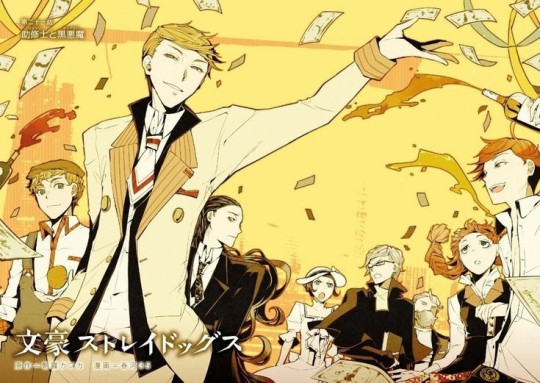
“So we beat on, boats against the current, borne back ceaselessly into the past.”
- Nick Carraway, The Great Gatsby
#bungo stray dogs#bsd#bsd characters#character analysis#bsd analysis#bsd fitzgerald#bsd guild#literature analysis#port mafia#armed detective agency#the guild#bsd louisa may alcott#.ryley.speaks
102 notes
·
View notes
Text
(function($){ $(window).load(function() { $('.tiled-gallery-caption').each(function(){ $(this).css('display', 'block'); }); }); })(jQuery);
“If I were asked to explain the Japanese spirit, I would say it is wild cherry blossoms glowing in the morning sun!” — Motoori Norinaga (1730-1801)
Japan’s flower language isn’t as well develop as the West’s. Japan’s stories and theatre focused on humanizing plants as opposed to using them to convey emotions and messages. Victorian Europe took the language of flowers to an extreme, but Japan had its own set of symbols. Because anime has developed into an international medium, I’ll examine both Japan’s flower symbology and the West’s flower language. You will see both styles mixed in anime.
Japan’s Language of Flowers
A chrysanthemum seller in Japan, ca. 1890, photographer unknown, via Photographic Heritage
During the Heian period, the symbolism of flowers took off, appearing in noh, poetry, and the world’s first novel. However, Japanese language allows for an identification between human emotions and nature that English doesn’t really allow (Poulton, 1997). In Japanese culture, natural phenomena has a spiritual life and power of its own. Noh showcases this in its more than a dozen plays that feature a flower or tree revealing itself as an incarnation of a god or Buddha. Various folk stories feature trees and flower spirits that can marry humans and bear children. The Willow Wife is one of my favorites. This aspect of Japanese culture remains unique. We don’t find many European stories that allow plants to be Christian saints or to marry humans.
Hanami, or flower viewing, was popular during the Heian period. The cherry blossom became a favorite, representing the fleeting moments of life. But each season had its own flower. And not everyone loved the sakura. The poet Saigyo found his hermitage invaded by visitors wanting to see a nearby tree’s blossoms (Poulton, 1997). He doesn’t refuse them when they visit, but he grumbles about it in a poem:
The cherries’ only fault: the crowds that gather when they bloom
Despite its popularity, the cherry blossom wasn’t the most important flower. Chrysanthemums became the symbol of the imperial house soon after they arrived from China. The flower became the imperial crest and the throne of the emperor was even named after it: the Chrysanthemum Throne (Lombardi, 2014). The flower meant the opposite of the cherry blossom: it represented longevity and power as opposed to transient beauty and gentleness.
While most flowers associated with Japanese women, the chrysanthemum directly associated with men. In the story of The Chrysanthemum Spirit, a young woman falls in love with a handsome courtier. She eventually finds out he is an autumn flower–the chrysanthemum–that took the shape of a human. The story “uses visual and poetic imagery traditionally associated with women to reframe reproductive potency in male terms (McCormick, 2013).”
Murasaki and Floral Characters
While shapeshifting flowers remained popular in noh and traditional stories, Murasaki took the idea and converted it into indirect story telling in her Tale of Genji. The novel tells its story indirectly through what is left unsaid and it’s imagery. It’s a difficult read because of it’s layers. Murasaki used various flowers to represent character personalities, future events, themes, and more. She relied on the reader to put everything together.
Murasaki weaved the names of flowers into chapter titles to suggest the events that will happen and the characters associated with each chapter. Flower included: evening glory, saffron flower, hollyhock, orange blossoms, lavender, morning glory, plum, cherry blossoms, carnations, and many others. She gives many of the women in Genji’s life the names of flowers. They act as shorthand for the character of each woman and stand in for her.
In one scene, Genji and a woman named Yugao were having an affair. Yugao was a common flower at the time. It blooms only at night and dies soon after. During their trist, Murasaki makes repeated references to a blooming yugao, foreshadowing Yugao’s early death just a few scenes later (Kido, 1988). Murasaki makes other flower references to foreshadow Genji’s other affairs and the fates of each woman. Even Genji’s fall from grace can be seen in these flower symbols. Centuries later, Charlotte Bronte would adopt the same technique for her work.
The Victorian Language of Flowers
A flower is not a flower alone; a thousand thoughts invest it.
During the Victorian period, women often became amateur botanists. They began developing a complete language using flowers, but early dictionaries often contradicted each other (Engelhardt, 2013). Many of the definitions extend deep into history, such as the idea olive branches symbolize peace, roses symbolize love, and so on. Although the Victorian period saw codified symbols and expansion of the language, most of the floral code date to medieval and Renaissance literature (Rothenberg, 2006; Engelhardt, 2013). But Charlotte Bronte and George Eliot used the symbols to construct a language fairly similar to Murasaki. Jane Eyre used flowers as sexual codes and to describe characters in shorthand as Murasaki did. For example, during a scene when Jane and Rochester take a walk, flowers appear throughout the description. Engelhardt (2013) drops the emotional associations and meanings of the plants during the walk:
…edged with box [stoicism]; with apple trees [temptation], pear trees [comfort], and cherry trees [deception] on the one side, and a border on the other, full of all sorts of old-fashioned flowers, stocks [lasting beauty], sweet Williams [sensitivity], primroses [first youth; if evening, inconstancy], pansies [thoughts], mingled with southernwood [jest/bantering], sweet-briar [I wound to heal], and various fragrant herbs. (249)
According to Engelhard (2013), Bronte seems to use the flowers to reveal the feelings of the lovers and of Rochester’s mysterious behavior in the scene. He is tempted (apple trees) to open his heart after years of being a stoic, but he realizes this would require deception (cherry trees) and ruining Jane’s beauty (stocks) because of her inexperience with love (primrose) and her sensitivity (sweet Williams). So Rochester jokes with her (southernwood) and hopes he will heal the pain of his marriage to Bertha (sweet-briar).
Most of the time, people used flowers to express embarrassing feelings, on par with what Bronte outlines with Rochester. In these floral dialogues, a lady or gentleman would ask a question or express an emotion by showing a flower. The other would then respond with their own flower. Flowers can be combined to form entire sentences, and the color of the flower can shift the meaning. So to carry Bronte’s illustration:
pink rose + cherry blossom + pink rose = desire to be educated in passion.
Pink roses have three meanings: desire, passion, and joy of life. Cherry blossoms equate with education. So the combination can also mean passion to be educated in desire, which still has the same general meaning.
Flowers and Their Meanings
Because the meanings of flowers were in dispute throughout the Victorian period, you may encounter some dictionaries that contradict what I list there. As with any language, time and use can change the meanings of words.
Apple blossom “Temptation”
Cherry blossoms “education, fleeting beauty”
Cornflower “delicacy”
Deep red rose “bashful shame”
Daisy “innocence, purity”
Hollyhock “fertility, ambition”
Yugao “fleeting”
Hyacinth “game”
Periwinkle “happy memories”
Sweet William “sensitivity”
Chrysanthemum “longevity, imperial power”
Paulownia “birth, girl, dowry”
References
Endresak, David, “Girl Power: Feminine Motifs in Japanese Popular Culture” (2006). Senior Honors Teses. 322. htp://commons.emich.edu/honors/322
Hoffman, Michael (2012) Sakura: Soul of Japan. Japan Times. https://www.japantimes.co.jp/life/2012/03/25/general/sakura-soul-of-japan/.
Kido, Elissa (1988) Names, Naming, and Nature in the Tale of Genji. Literary Onomastics Studies. 15. Article 4.
Lombardi, Linda (2014) Chrysanthemums are more than just a symbol of autumn. Japan Times. https://www.japantimes.co.jp/news/2014/10/27/national/chrysanthemums-just-symbol-autumn/
McCormick, Melissa. (2013) “Flower Personification and Imperial Regeneration in The Chrysanthemum Spirit.” In Amerika ni wattata monogatari-e. Tokyo: Perikansha.
Poulton, Mark. (1997) The Language of Flowers in the No Theatre. Japan Reveiw. 8. 39-55
Rothenberg, David (2006) The Marian Symbolism of Spring ca. 1200-ca.1500: Two Case Studies. Journal of Musicology Society. 59 (2) 319-398.
Japan and the Language of Flowers “If I were asked to explain the Japanese spirit, I would say it is wild cherry blossoms glowing in the morning sun!”
1 note
·
View note